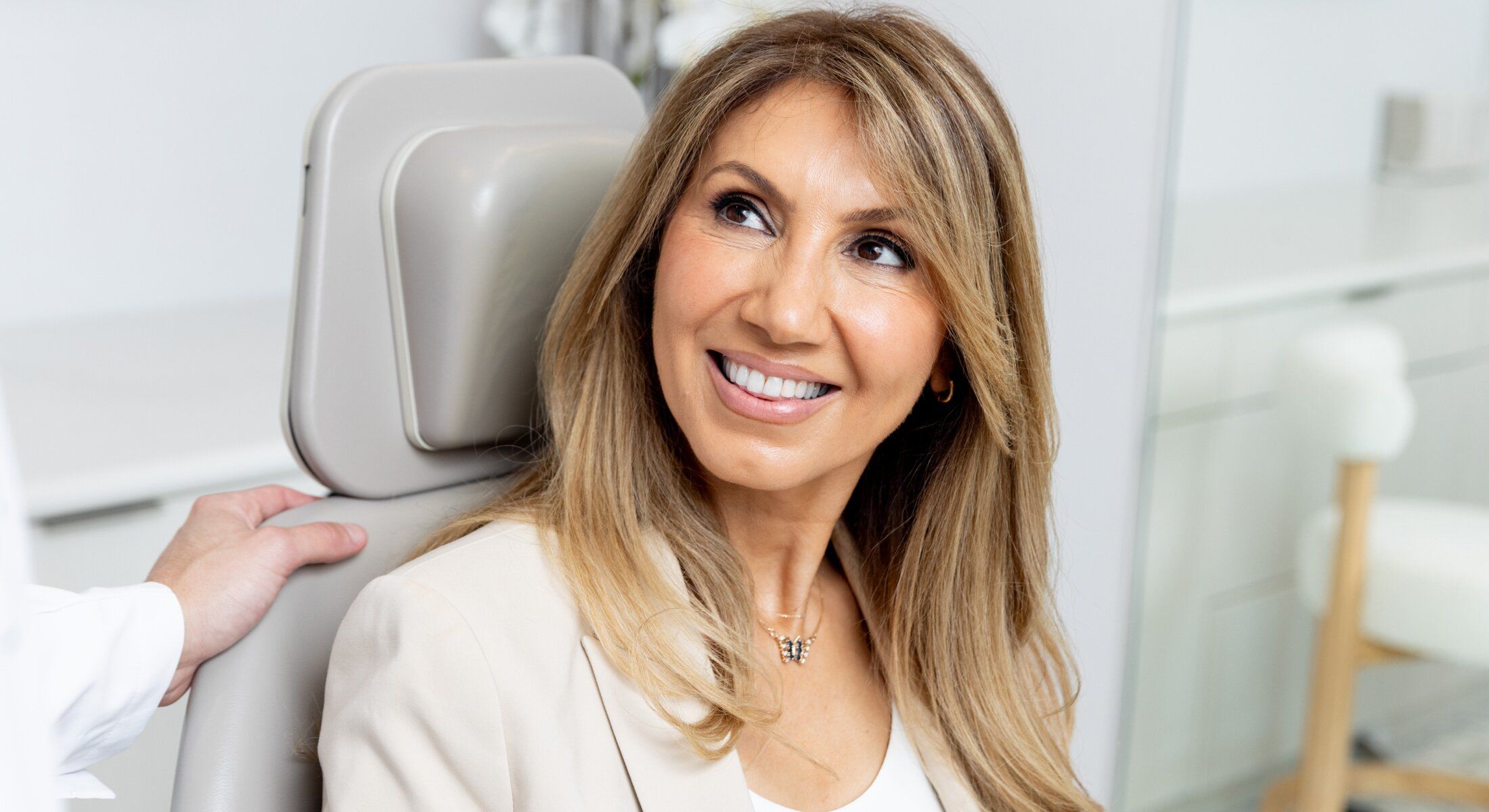

While your 20s and 30s are often marked by personal growth, career path decisions, and family building, some of the most significant changes that happen in your 40s are physical. In fact, a recent study found that at age 44 (and again at 60), there is a significant shift in aging on a molecular level. Researchers refer to it as a time of “substantial dysregulation,” where signs of aging throughout the body are changing.
It makes sense, then, that the outward signs of aging, including loss of volume, wrinkles, and loose skin on the face, will start to become much more noticeable in your 40s, and it might even seem like a more rapid shift than the gradual aging experienced in previous decades of life. This, combined with shifting attitudes toward cosmetic surgery that are moving toward greater acceptance and more preventative measures, means that many women and men are opting for facelifts in their 40s.
In this post, board-certified Beverly Hills plastic surgeon Dr. Nima Shemirani talks about the three most common procedures patients undergo in their 40s.
Watch the video on Instagram to hear directly from Dr. Nima as he breaks down why this decade is such a pivotal time for facial rejuvenation—and how these facial cosmetic procedures can restore youthful contours while preserving your natural expression.
As Dr. Nima points out, liposuction around the neck and jawline is typically not enough to restore definition once you’re in your 40s. This is due to loss of elasticity and the resulting loose skin that comes along with aging in this decade. Along with achieving ideal results, a facelift before 50 can act as an early intervention and slow the progression of aging signs in the face. In addition, waiting until your 50s, 60s, or even later means a need for more extensive correction and increases the possibility of more unnatural-looking results. Think of a facelift in your 40s like getting your hair trimmed regularly—it’s much easier for a stylist to reshape a cut that’s mostly already there versus chopping several inches of length and recutting layers to get your hair back to its original style.
Another great thing about modern attitudes toward facelifts is customization. The days of wind-blown, one-size-fits-all facelifts are gone and have been replaced by modern techniques and many varieties. Facelifts can be fully tailored to meet your specific aesthetic goals and are based on unique facial anatomy along with the degree of sagging and facial volume loss.
A traditional facelift can provide improvement along the jawline and add volume to the midface, resulting in a fully rejuvenated appearance. For those who are seeing deeper, more significant volume loss or facial sagging, a deep plane facelift can be used to improve the underlying muscles and tissue in the face with maximum effect. Patients with minimal skin laxity or mild volume loss can benefit from a mini facelift, which is also a great choice for those who want to avoid general anesthesia and extensive downtime.
With a skilled surgeon, tailored facelifts can provide a subtle lift and a refreshed appearance that won’t be overly drastic or look unnatural. No matter the degree of aging or desired results, an experienced and qualified plastic surgeon can help you determine what is ideal for you and your needs.
That accelerated level of aging typically won’t just affect the cheeks and jawline. The eyes and the lips are other common areas that may begin to show sagging or volume loss. When injectables start to be less effective, or you’re simply tired of the ongoing maintenance treatments, eyelid surgery or a lip lift might be the answer. Facelifts are often combined with blepharoplasty to combat sagging eyelids and under eye hollows or a lip lift to bring a youthful elevation to the lip area. A brow lift or neck lift could also be combined for comprehensive rejuvenation.
If you’re in your 40s and starting to notice significant facial aging and would like to address it with a long-term solution, you may be a good candidate for a facelift. Another indicator may be whether non-surgical treatments are still giving you the results you want. If fillers and laser treatments aren’t quite cutting it, surgical treatment may be the next step. It’s important to keep in mind that your candidacy will be based on facial anatomy and skin condition, not just age, and a knowledgeable plastic surgeon will be able to evaluate your facial features to make an accurate determination.
Ultimately, deciding whether to have a facelift in your 40s is about elevating your confidence and feeling comfortable in your skin. Will this rejuvenation change how you feel in your personal life and career? Will it make you feel more vibrant and energized? These are important questions that each potential patient should consider carefully. Start your consideration by meeting with an experienced and board-certified facial plastic surgeon like Dr. Nima at Eos Rejuvenation today.